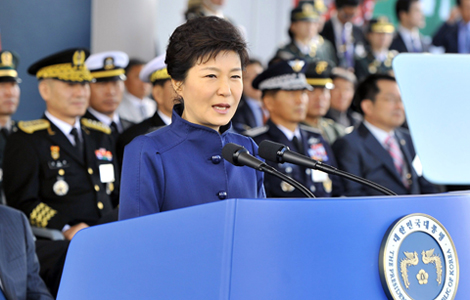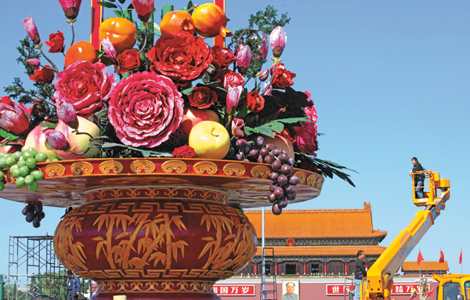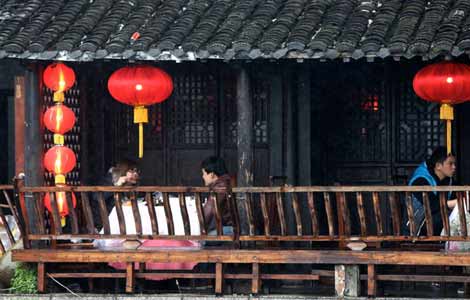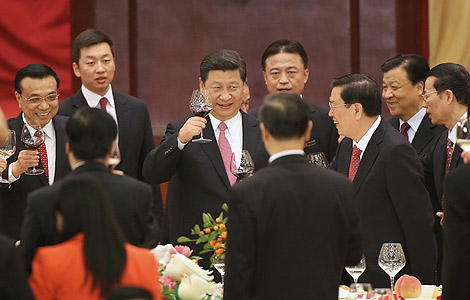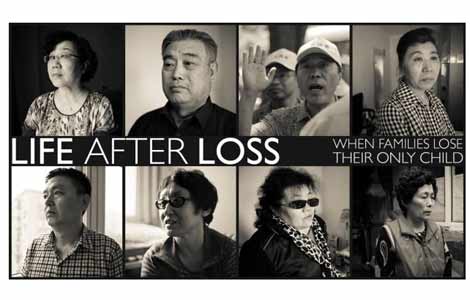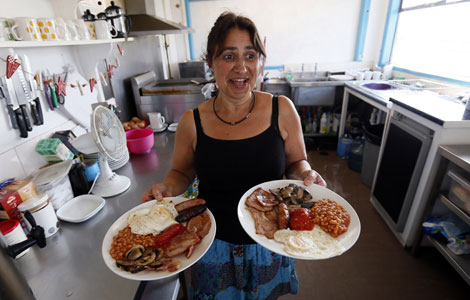Sky-high ambition on a plate
Updated: 2013-10-01 15:00
By Wang Wen (China Daily)
|
||||||||
|
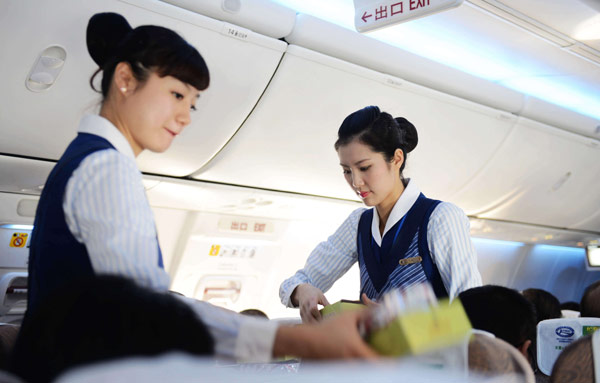 |
'Chicken rice or beef noodle?"
It may be the most familiar question for passengers on flights in China, and most frequent flyers are sick of the dull in-flight food.
The poor taste of airline food is coming under renewed criticism.
"I did not even want to smell the in-flight meals, during the period I traveled a lot," said Li Qi, a 28-year-old businessman who usually travels in North China.
Business insiders attribute the bad taste to the cold-chain processes, as the meal must be made in conditions below 20 degrees Celsius.
"It is very hard to make the in-flight meal delicious, because of the production process," said Liu Zhiqiang, general manager of HNA Group's food business division, which is the largest shareholder of E-food Group Co Ltd, the only listed in-flight meal maker in China.
Hot food is cooled to below 20 degrees as soon as it is cooked and reheated by an oven in the air for service.
"The oven-heated meals taste worse than the fresh, definitely," Liu said. Oven-heated is even worse than the microwaved food.
But the microwave oven cannot be used a lot in the airplane, as it may interrupt the communication systems, he added.
Imperial Airways, the predecessor of British Airways, introduced meals on its flights in May 1927.
Chinese airlines prepare their meals following Western processes, which is not suitable for Chinese food, Liu said.
"Most Chinese food needs to be reheated, which will destroy its good taste," he said.
|
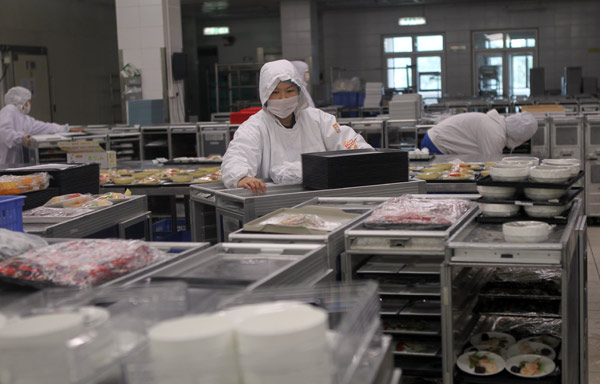 Workers prepare and package cooked food for in-flight service at Beijing Xinhua Airport Catering Co Ltd, which has about 15 percent of the in-flight food market in the capital. [Photo / China Daily]
|
But airline food is set to improve, as food manufacturers are experimenting with normal-temperature processes to keep the meals fresh.
The life of meals, which will be irradiated through high temperature and pressure facilities, can be prolonged.
"But the facilities will cost a lot, therefore normal-temperature processes cannot be a popular method," Liu said.
The civil aviation industry has to consider cost, since the industry's margins have been dropping.
All Chinese airlines made 388.98 billion yuan ($63.56 billion) in revenue in 2012, a 9.1 percent year-on-year increase, but their total profit was only 21.1 billion yuan, decreasing by 6.21 billion yuan during the same period, according to the Civil Aviation Administration of China.
The drop in airline income also affects the meal manufacturers. E-food Group, which has seven in-flight meal factories across the country, received only 368.75 million yuan from the in-flight meal arm of their business in 2012, down 4.59 percent year-on-year, despite the group producing 10.39 percent more in-flight meals, according to its financial report.
"Some of the airlines cut backups and some of them just cut the whole budget directly," Liu said.
The civil aviation authority also released a new policy in January stating that flight attendants are only allowed to begin work 20 minutes after take off and must stop work 30 minutes before landing.
The new policy means flights under two hours in length no longer have time to serve meals.
In-flight meal manufacturers have to search for other ways to expand their business, although their market share is relatively stable.
The growing market in chartered business flights and budget airlines provides opportunities for in-flight meal providers.
Most Viewed
Editor's Picks

|

|

|

|
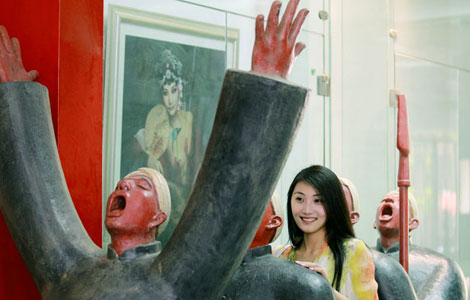
|

|
Today's Top News
US government partial shutdown begins
Pentagon reassures China over India ties
China committed to deepening reform
Chinese embassy in Syria attacked
Li: China confident in meeting economic targets
New FTZ gets a big US bank
China, India join hands on border stability
China issues guidance for government purchases
US Weekly

|

|

